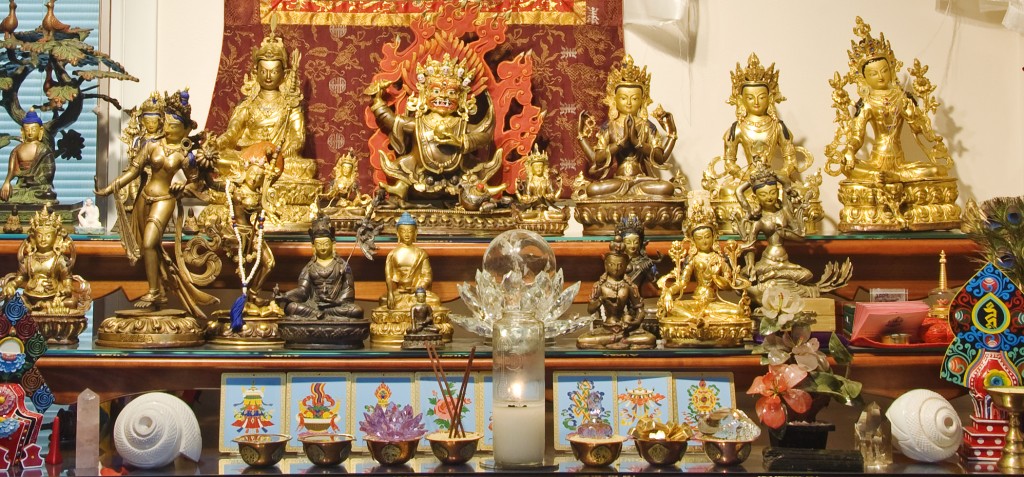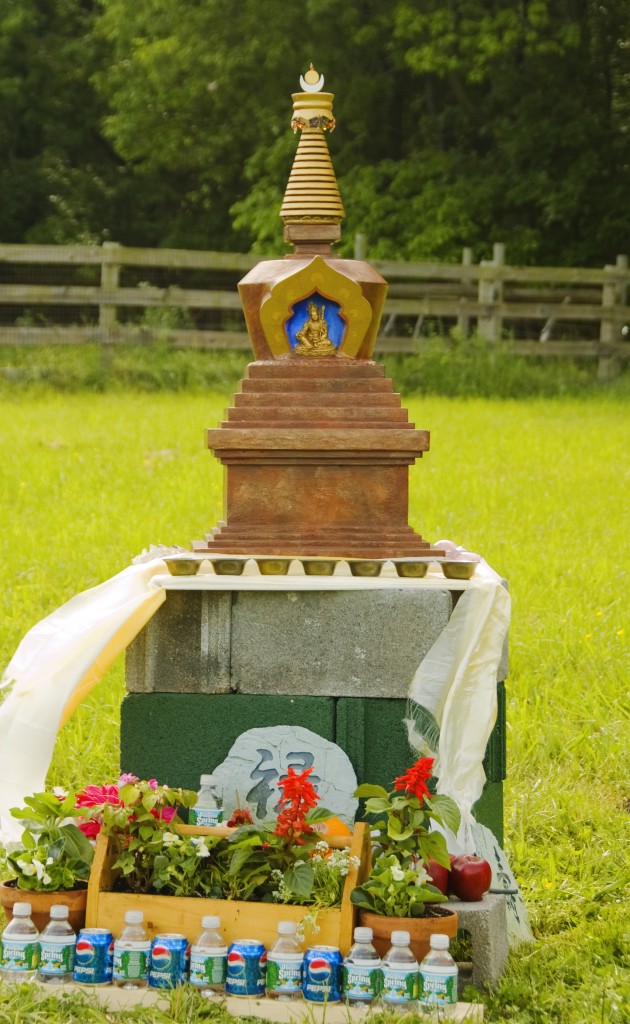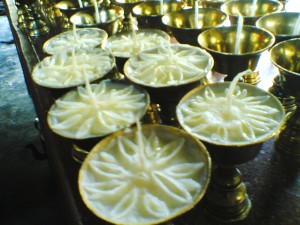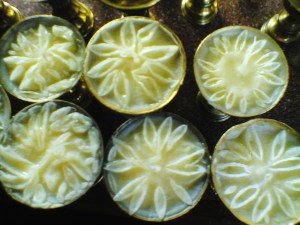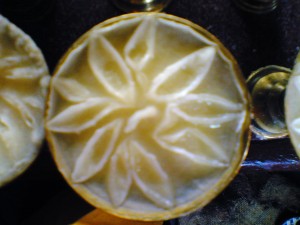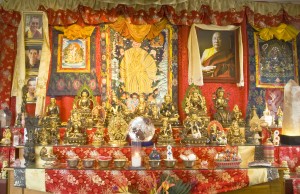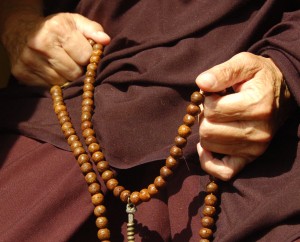
About Malas
The meaning of the Sanskrit word “Mala” is “garland.” The word for Mala in Tibetan is Akshamala. For Buddhist practitioners a mala is considered an essential tool. Below is a brief explanation about Malas, their purpose, meaning, and use.
What is a Mala?
From a practical and outer point of view, a mala can simply be understood as a method for counting Mantra recitation. There are typically 108 beads on a Mala string. Traditionally, when counting mantras, only 100 of the 108 are recorded in the accumulation. The extra 8 are not counted because of errors that may have occurred during the recitation. However, a Mala can be a great deal more than just a counting device.
Symbology of a Mala
On a deeper level, the Mala represents the Form and Speech of the Deity. It can be viewed as the Root Deity and the entire assembly or mandala of that Deity. For example, if you are doing a Chenrezig practice, the large bead on the Mala represents Chenrezig and the other beads represent the entourage of the Deity. In this view, the Mala is a support for one’s practice and can become an object of refuge for the practitioner.
Before using a Mala, it is essential to ask a Lama to bless it. After that, it must be treated with reverence and not touched by other people or animals.
How to Use a Mala
Traditionally one holds the mala in one’s left hand. With each recitation a bead is pulled forward. Symbolically, this represents the “Vajra Hook” which brings forth blessings and virtue. The basic instruction is to use the thumb to move the bead forward.
While reciting mantra, it is auspicious to hold the mala to one’s heart. This is symbolic of “protecting one’s heart” with meritorious and virtuous activity.
The large bead on the Mala is called the Guru Bead or Mother Bead. One never crosses over this bead, just as one would never step over something precious and rare. Out of respect and gratitude, one reverses direction after 108 recitations.
Types of Malas
A variety of materials may be used to make a mala: wood or metal beads, seeds, raksha beads (the dried fruit of the raksha tree), as well as precious gemstones or jewels.
Guru Rinpoche gave specific instructions on various types of malas and their use. For example, he said that a mala made of iron or steel multiplies the virtue of accumulating mantra recitations in a general way. With a copper mala, the virtue increases four times. A Raksha mala increases it 20 million times. A pearl or ruby mala increases it 100 million times. The virtue is multiplied by 100,000 if one uses a silver mala. The potential benefit from using a Bodhi seed mala is limitless for any form of practice.
Mantra Recitation
To understand the meaning and purpose of Malas, one should also understand Mantra recitation. The Sanskrit word “Mantra” literally means “protection of the mind.” For each practice that is dedicated to a Meditational Deity, there is a mantra specific to that Deity. A Mantra is a collection of precious seed syllables representing the condensed essence of all the pure qualities and attributes of a Deity. Reciting a Mantra in this profound, virtuous way helps our own pure qualities to come forth. These qualities are ultimately non-dual with the Deity’s. For example, Chenrezig’s mantra is “Om Mani Padme Hung.” If a practitioner recites this mantra with a pure heart and proper motivation, seeking to be of benefit to sentient beings, with faith, devotion, and proper understanding of the method, then only benefit will arise in the mind. One’s natural compassionate nature will be cultivated and nurtured. Over time, transformation of one’s negative qualities will be replaced by virtuous, pure qualities that are inherent within us all. This method of recitation helps us to awaken to our true nature.
